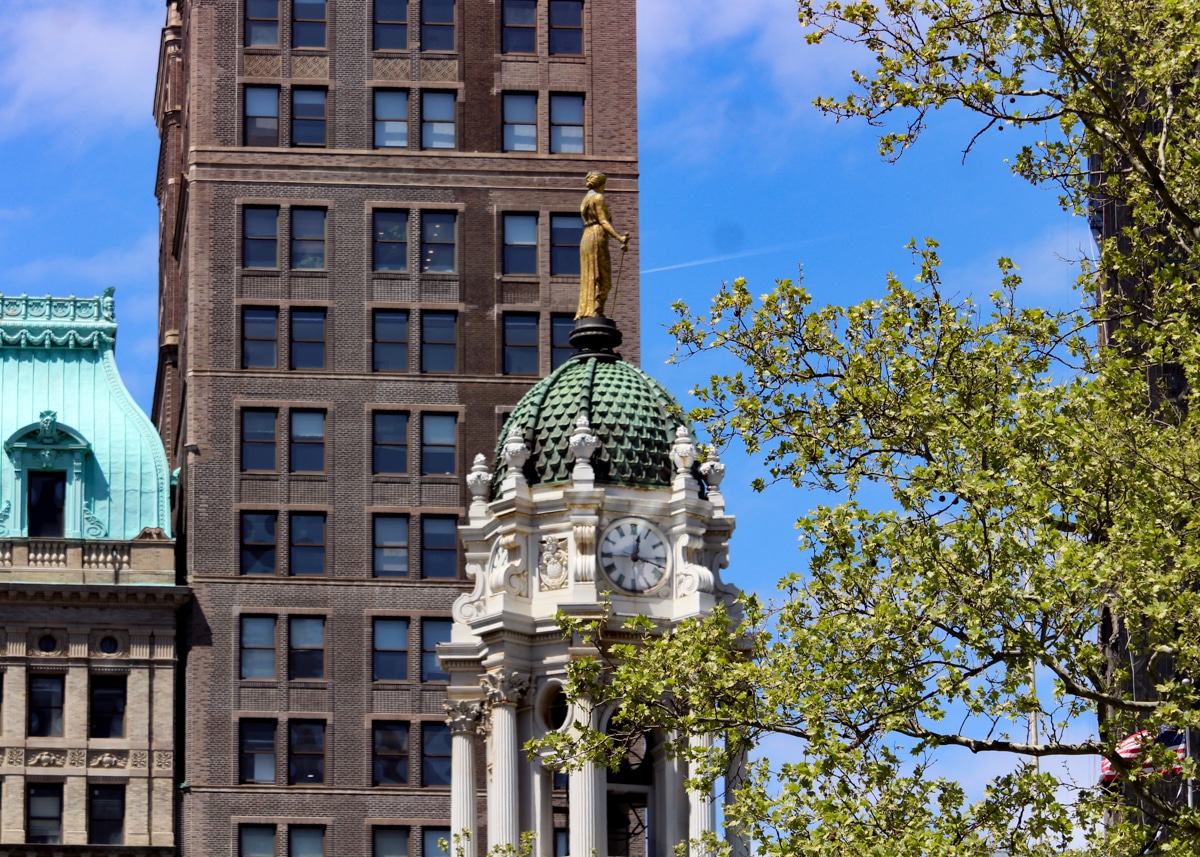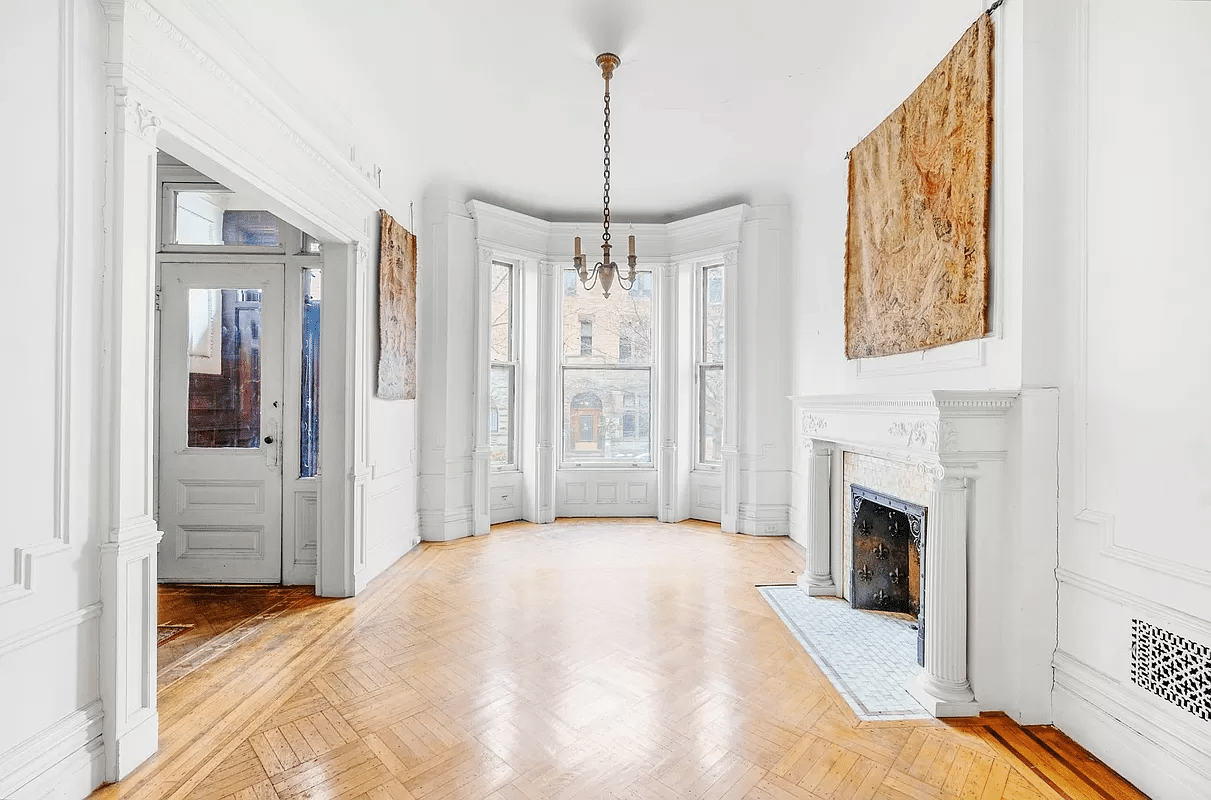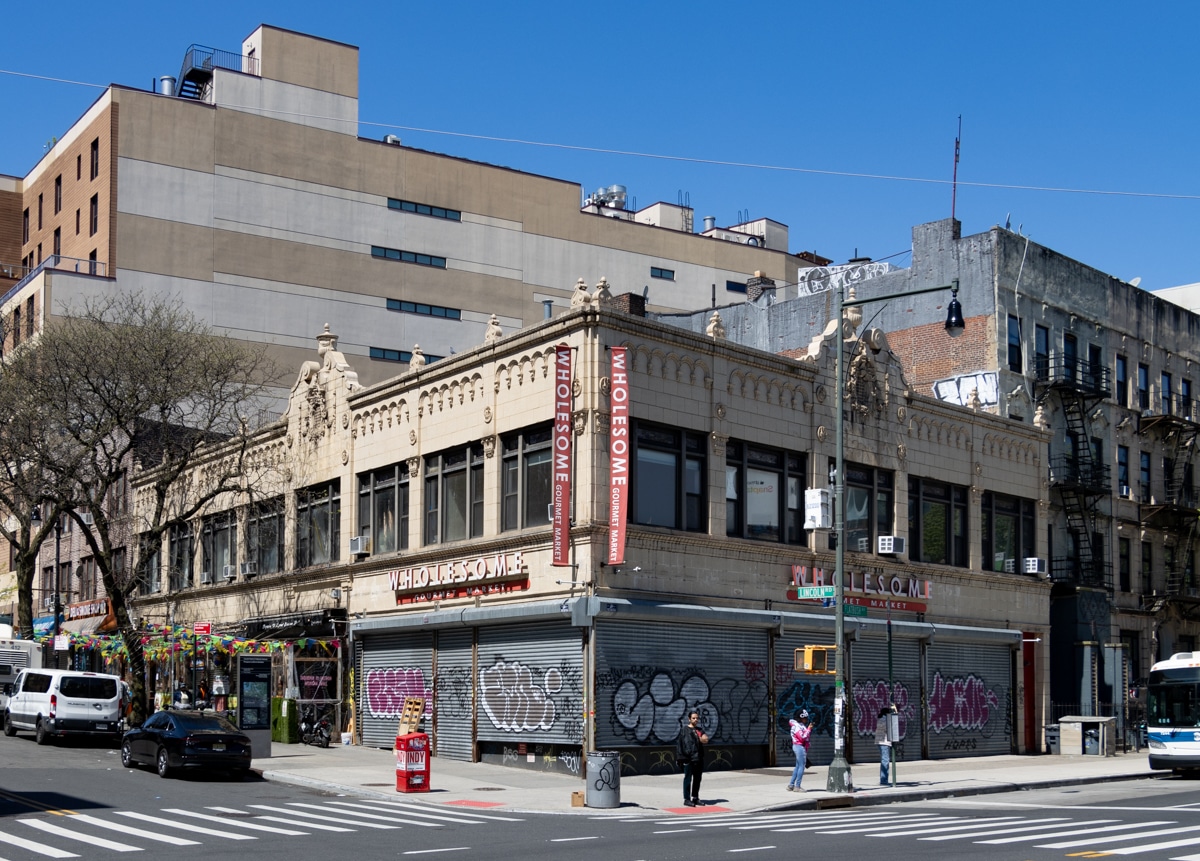Building of the Day: Manhattan Bridge anchorages
Brooklyn, one building at a time. Name: Manhattan Bridge granite anchorages Neighborhood: DUMBO (and Manhattan) Year Built: 1901-1909 (anchorages begun in 1903) Architectural Style: (anchorages) Beaux-Arts Architect: Original arches designed by Henry Hornbostel, then taken over by Carrere & Hastings, bridge itself designed by Gustaf Lindenthal, and later, Leon Moisseiff. Other works by architect: (C&H)…

Brooklyn, one building at a time.
Name: Manhattan Bridge granite anchorages
Neighborhood: DUMBO (and Manhattan)
Year Built: 1901-1909 (anchorages begun in 1903)
Architectural Style: (anchorages) Beaux-Arts
Architect: Original arches designed by Henry Hornbostel, then taken over by Carrere & Hastings, bridge itself designed by Gustaf Lindenthal, and later, Leon Moisseiff.
Other works by architect: (C&H) Manhattan side Arch to the bridge, NY Public Library, among many others.
Landmarked: No
The story: OK, not technically a building, but it has an arched roof, you can stand under it, take shelter, and the space underneath is larger than many people’s apartments.
A huge suspension bridge like the Manhattan Bridge needs the support of sturdy anchorages on both banks of the river, and this bridge is outfitted with some of the most beautiful bulwarks anywhere. A super important project like a bridge spanning the East River would be fraught with all kinds of people and city agencies vying for power and control, this was certainly true here. See my Walkabouts, Part 1 and Part 2, on the bridge for a more complete story.
The original architect of the anchorages was Henry Hornbostel. His very elaborate design was very French, with lots of carved ornament, and rooms inside the anchorages. He was soon replaced by the firm of Carrere & Hastings. Both men, graduates of the famed L’Ecole des Beaux-Arts school in Paris, were at the forefront of the American Beaux-Arts movement, and are credited with introducing it to New York. This architecture was the outward manifestation of the City Beautiful Movement, and the idea that even functional elements, like these anchorages, could be imbued with great beauty, uplifting the mundane and neccessary to something quite grand.
Architectural critic Montgomery Schuyler, writing in 1909, right before the bridge opened, thought so too. He wrote that the anchorages, “wear, indeed, an aspect of Egyptian immobility. These anchorages, give visible promise of a duration equal to that of the great temple of Ramses, or the great pyramid of Cheops.”
The anchorages are encased in granite, and have those spectacular arches and buttresses. There isn’t a lot of decorative frou-frou, but a solid elegance and majesty to these massive structures. The granite was recently repointed and cleaned, and now shines. The spaces under both arches are used for rest and respite, and also concerts, festivals and markets. They are among the best spaces in New York. GMAP












you can’t beat Hornbostel, his anchorages are positively pharaohic.
Whoops! That was in the Brooklyn Bridge anchorage. Still cool!
Under the Anchorages? What about inside? Starting in 1983 Creative Time held all kinds of performance and art events inside the anchorage. It was an amazing space. I guess post-9/11 this will never be possible again. Here is a link that describes that era:
http://creativetime.org/archive/index.php?cat=52&paged=2